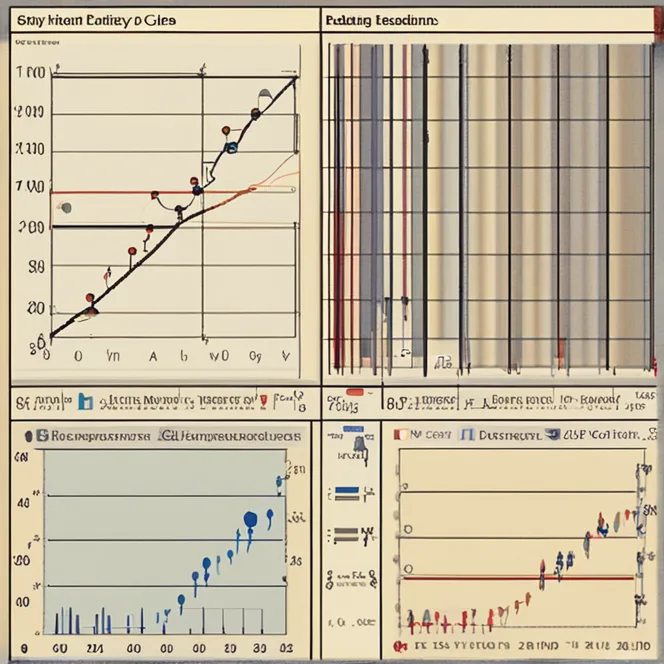
Mastering Biorhythm Chart Reading
Uncover the secrets of biorhythm charts to understand your natural cycles for optimal well-being and performance.
article by Adrian Wallace
Understanding your biorhythms can be a key to enhancing your well-being and productivity. Biorhythms are a complex system that suggests individuals experience inherent cycles in various aspects of life, such as physical, emotional, and intellectual states. The concept, first introduced in the late 19th century, has evolved into the creation of biorhythm charts that purport to predict individual patterns. By reading these charts, one may attempt to align activities with these bio-cycles, potentially leading to improved outcomes in various endeavors. Let's delve into how to navigate the waves of your existence through biorhythm chart analysis.
Understanding Biorhythm Cycles
The fundamental principle of biorhythms is based on three core cycles: the physical, emotional, and intellectual. Each cycle has a different duration: the physical cycle lasts for 23 days, the emotional cycle is 28 days, and the intellectual cycle runs for 33 days. From the day you were born, these cycles have oscillated in sine wave patterns, with each having high, low, and critical (transition) days. High periods denote times of strength and vitality, low periods suggest times of recovery or vulnerability, and critical days signal significant change or instability in the specific biorhythm.

Mapping Out Your Chart
To read a biorhythm chart, start by obtaining one based on your date of birth—an essential piece of information as the cycles begin the moment you are born. Modern technology allows for easy chart generation online. Once you have your chart, you'll notice a graph with a horizontal line representing the birth date extending outward to display the cycles for the date range selected. Vertical lines represent days, while the sinusoidal waves across this timeline indicate your biorhythm states.
Interpreting the Sinusoidal Waves
On the biorhythm chart, a wave crest above the horizontal line signifies a high period, and a trough below indicates a low period. Critical days are represented by any point where the wave crosses the horizontal line, suggesting a transition between high and low states. By observing the overlapping cycles, you can discern whether you're likely entering a period of enhanced physical strength, emotional sensitivity, or mental acuity—or perhaps facing a day where extra caution is advised.

Synchronizing Life with Cycles
Once you've deciphered your biorhythm chart's basic rhythm, you can aim to sync life's demands with your natural cycles. For instance, schedule challenging workouts or demanding tasks during physical peaks, engage in important social interactions or creative pursuits during emotional highs, and reserve complex problem-solving for intellectual high points. Being mindful of low and critical days can help you avoid potential pitfalls by planning for rest or caution.
Applying Biorhythms Practically
Biorhythm charts serve as a guide rather than an absolute predictor of daily outcomes. Like any holistic approach, they are best used in conjunction with other healthy habits and self-awareness practices. It is crucial to listen to your own body and mind and combine chart insights with personal intuition and other wellbeing strategies.
Cautions and Considerations
While some find biorhythm charts useful, it's important to note that the scientific community widely considers them a pseudoscience. There is no substantial empirical evidence to support the accuracy of predictions made by biorhythm theory. Thus, these charts should be used for entertainment and self-observation purposes, rather than as a basis for critical life decisions.
Published: 12/8/2023
Modified: 12/8/2023
More predictions
Come back here soon to learn more about yourself and your future


Biorhythms and Birthdays: Physical Cycle Compatibility
In the intricate dance of human relationships, biorhythms play a crucial yet often overlooked role. Biorhythms, the natural cycles of physical, emotional, and intellectual energies that ebb and flow within each of us, are intrinsically linked to our birth dates. Understanding how these rhythms align or conflict with those of others can provide valuable insights into relationship compatibility.


Decoding The Magic Of Biorhythms
Biorhythms, a captivating concept, emerged from the belief that our lives are deeply intertwined with rhythmic cycles.


Biorhythms: Unlocking the Code of Biological Rhythms
Explore the fascinating world of biorhythms and how they influence our physical, emotional, and intellectual states throughout life.